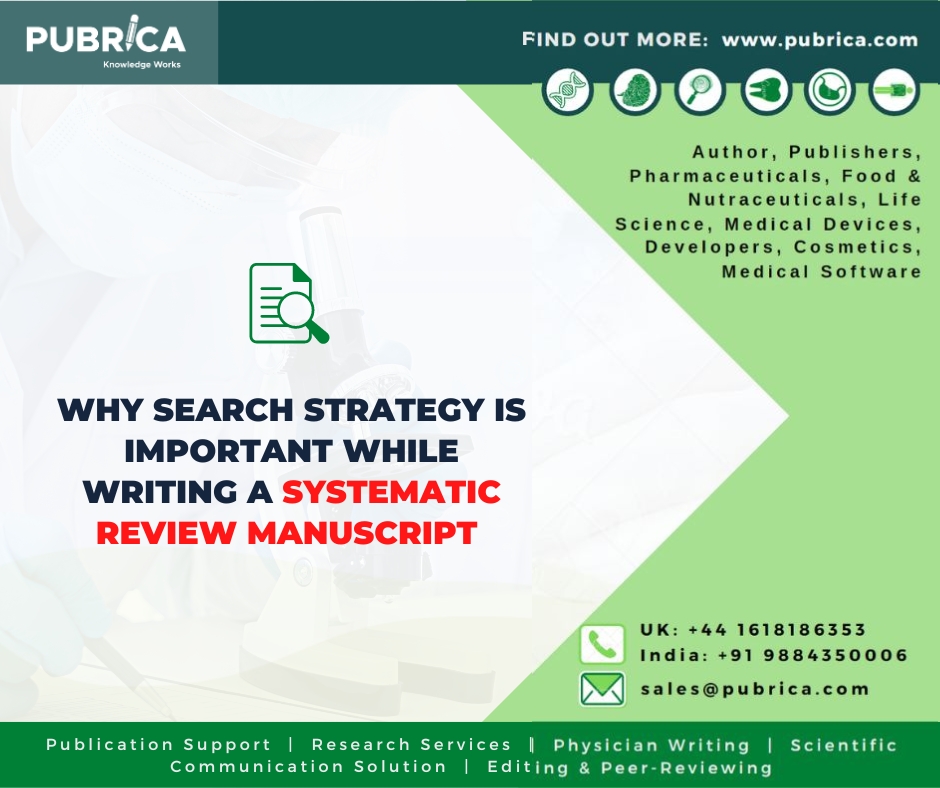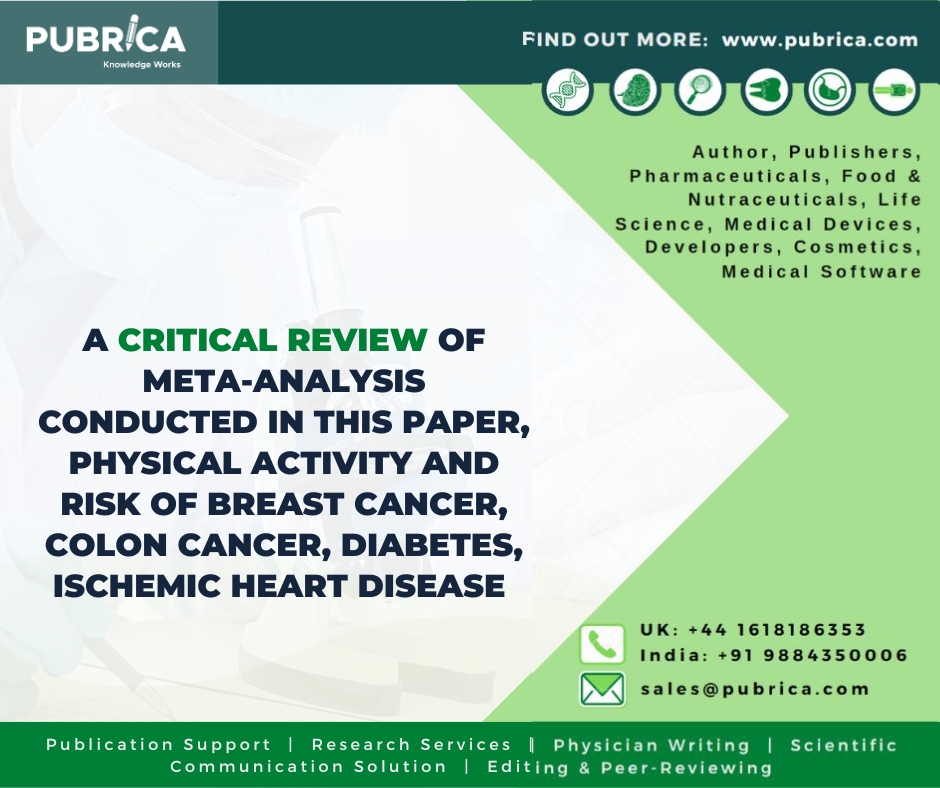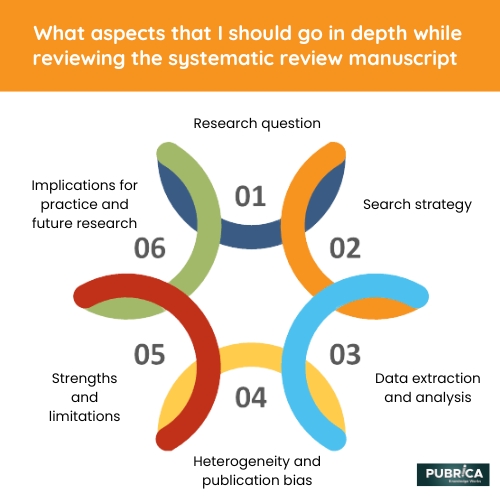
Why search Strategy is important While Writing a Systematic Review Manuscript
May 19, 2023
A critical review of Meta-Analysis conducted in this paper, “Physical activity and risk of breast cancer, colon cancer, diabetes, ischemic heart disease.
May 23, 2023In brief
A systematic review manuscript seeks empirical data to address a specific research topic. A well-formulated question with inclusion and exclusion criteria, a comprehensive literature search, critical evaluation of included studies, data extraction and management, data analysis and interpretation, and a report for publishing are all part of the process. It should be done in accordance with a predetermined methodology.
Introduction
When reviewing a systematic review manuscript paper in-depth, here are some key aspects that you may want to consider:

- Research question: Evaluate whether the research question is clearly stated and appropriately focused. Consider whether the question is relevant and important to the field and whether the systematic review provides a comprehensive and informative answer to the question.
- Search strategy: Assess the search strategy used in the systematic review, including the databases searched, the search terms used, and the inclusion and exclusion criteria. Consider whether the search strategy was comprehensive and whether it identified all relevant studies on the topic.
- Data extraction and analysis: Evaluate the methods used for data extraction and analysis, including the quality assessment of the included studies and the Biostatistical methods used for meta-analysis. Consider whether the methods were appropriate and rigorous and whether they were applied consistently across all included studies.
- Heterogeneity and publication bias: Consider the degree of heterogeneity among the included studies and whether this was adequately addressed in the analysis. Evaluate whether there was evidence of publication bias or other sources of bias that may have influenced the results.
- Strengths and limitations: Evaluate the strengths and limitations of the systematic review, including the quality of the included studies, the generalizability of the results, and the potential sources of bias or confounding. Consider whether the authors adequately addressed the study’s limitations and whether the conclusions are appropriate and supported by the evidence presented.
- Implications for practice and future research: Consider the implications of the systematic review for clinical practice and future research. Evaluate whether the findings are relevant and helpful in informing clinical literature review decision-making and whether there are areas where further research is needed to understand the topic better.
A comprehensive review of a systematic review requires careful evaluation of the research question, search strategy, data extraction and analysis, heterogeneity and bias, strengths and limitations, and implications for practice and future research. The discussion section of a research paper’s critical review of these aspects can help ensure that the systematic review is rigorous, informative, and relevant to the field.
Conclusion
A systematic review manuscript earns the adjective systematic if it is based on a clearly formulated question, identifies relevant studies, appraises their quality and summarizes the evidence using the explicit methodology. The explicit and systematic approach distinguishes systematic reviews from traditional reviews and commentaries. Whenever we use the term review in this blog, it will mean a systematic review. Reviews should never be done in any other way.
About Pubrica
Pubrica’s research and writing teams deliver scientific and medical research articles that writers and practitioners may find valuable. Pubrica medical writers help you create and rewrite the introduction by telling the reader about the chosen research subject’s limitations. Our specialists comprehend the order in which the restricted subject, difficulty, and background are followed by the targeted region in which the hypothesis is offered.
References
Khan KS, Kunz R, Kleijnen J, Antes G. Five steps to conducting a systematic review. J R Soc Med. 2003 Mar;96(3):118-21. doi: 10.1177/014107680309600304. PMID: 12612111; PMCID: PMC539417.



